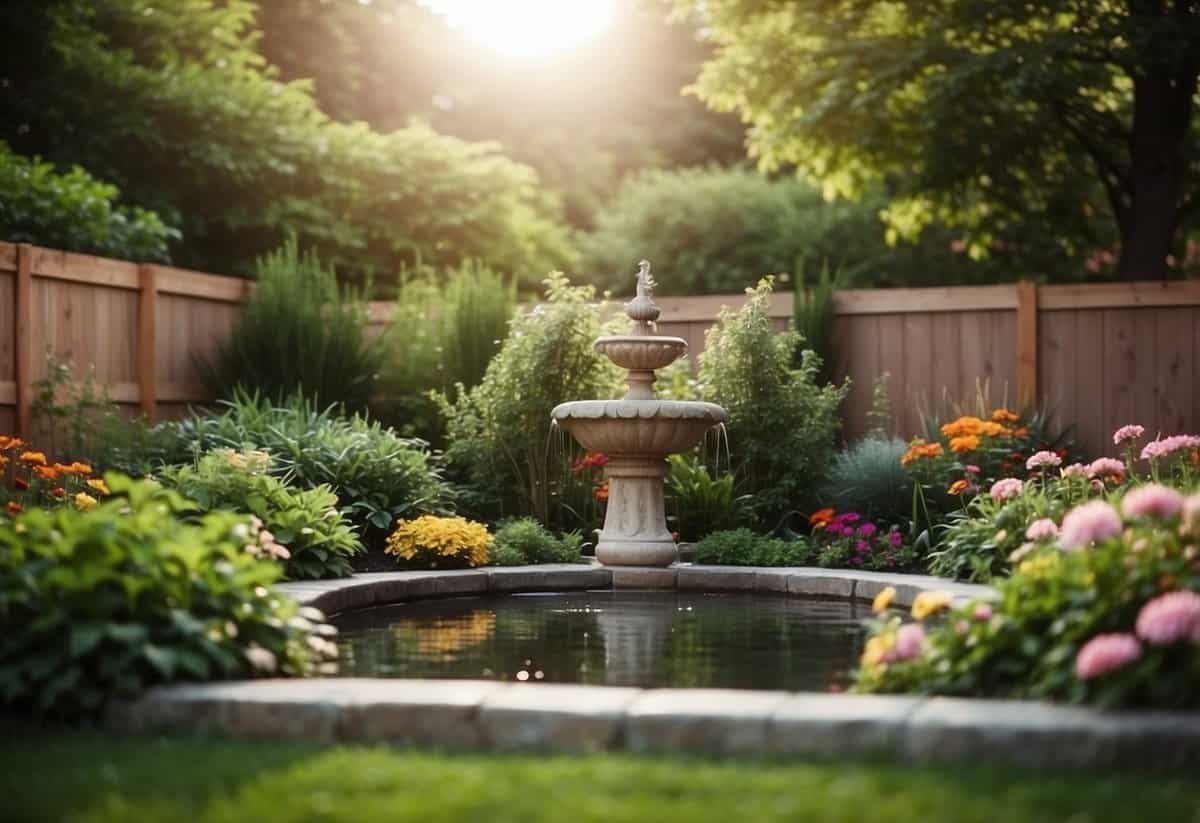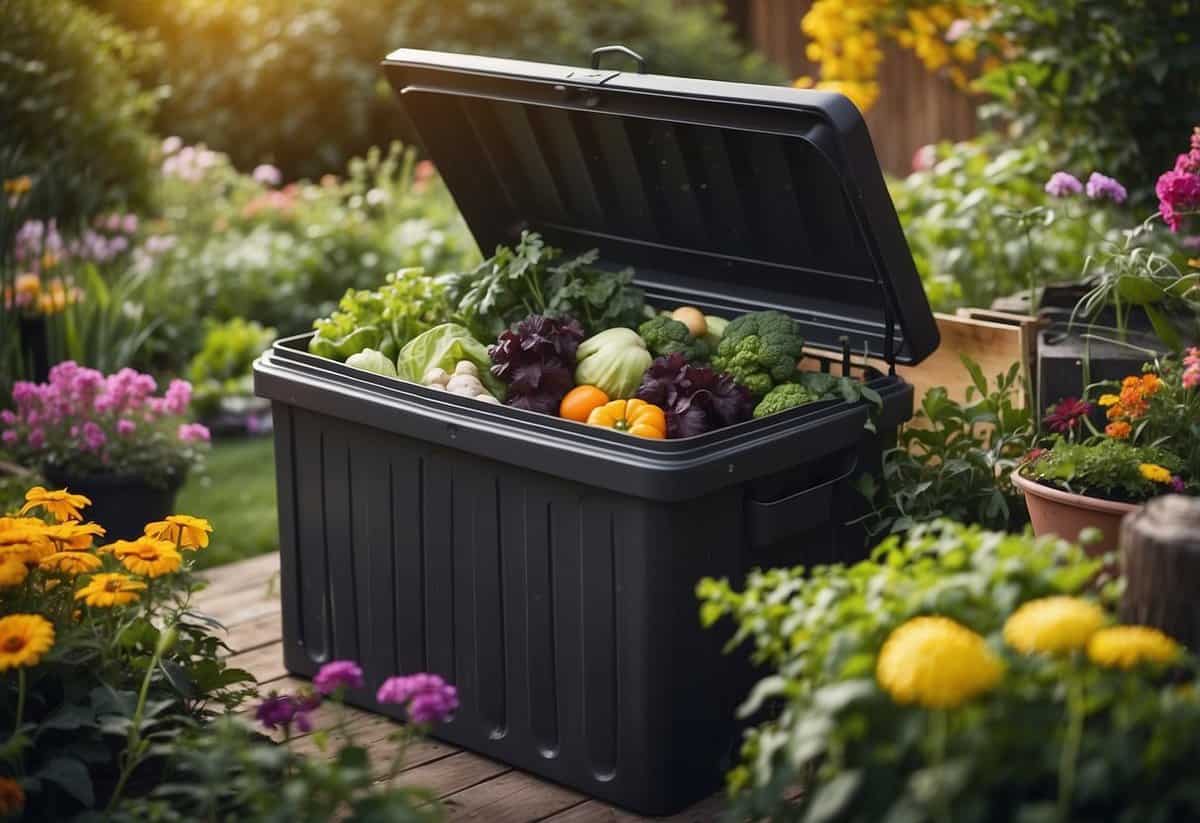Back Yard Garden Ideas: Create Your Dream Outdoor Space
Transforming your backyard into a beautiful garden can be a fun and rewarding project. You can create a space that provides relaxation, entertainment, and even a bit of exercise. Whether you have a small yard or a large one, there are endless possibilities to make it your personal oasis.

Thinking about what you want from your garden and planning accordingly can turn any backyard into your dream outdoor space. From striking flower beds to cozy seating areas, the right design can make your backyard enjoyable all year round. Get ready to explore some inspiring ideas that can bring new life to your outdoor area.
1) Vertical Gardens

Vertical gardens are a great way to use small spaces in your backyard. They allow you to grow a variety of plants without taking up too much room.
You can create a vertical garden by adding planters to a wall or fence. This not only looks beautiful but also creates more space for gardening.
Consider using materials like wood slats, pallets, or even bottles to set up your vertical garden. They provide a unique and creative touch to your backyard. Check out these vertical garden ideas for more inspiration.
2) Herb Spiral

An herb spiral is a great way to grow different herbs in a small space. It’s a raised bed designed in a spiral shape, allowing you to plant multiple herbs with different needs.
Start by using larger rocks for the bottom layer and smaller ones for the top. This helps keep the structure stable and attractive.
Create a spiral by layering the stones, raising them to about three to four feet high. Fill the gaps with gravel or rubble to support the stones. Remember to place herbs that need more sun and drainage at the top and those that prefer more moisture at the bottom.
An herb spiral can add charm to your garden while providing fresh herbs within easy reach. For more information, check out how-to-build-an-herb-spiral.
3) Fruit Trees

Fruit trees can be a great addition to your backyard. They not only provide delicious fruits but also add beauty to your garden.
Apple trees are a popular choice because they are easy to grow and are very versatile.
If space is a concern, consider planting dwarf or semi-dwarf fruit trees, which stay smaller in size.
Some fruit trees, like certain fig varieties, can even be grown indoors under a grow light.
For more ideas, check out this guide on the best fruit trees to grow in your backyard.
4) Raised Beds

Raised beds are a wonderful way to grow your garden. They give you better control over the soil and make it easier to manage weeds. You can choose from many materials, including wood, metal, and stone.
Raised beds offer excellent drainage, which helps prevent waterlogging and root rot. They are great for areas with poor or compacted soil. Plus, they make gardening more accessible since they are higher off the ground.
If you’re looking for inspiration, check out these raised garden bed design ideas.
5) Compost Bin

A compost bin is a great addition to your backyard garden. It helps recycle kitchen scraps and yard waste into valuable compost for your plants.
You can easily make a compost bin from materials like plastic storage containers or even 5-gallon buckets. This can be a fun DIY project and is perfect for small spaces. For step-by-step instructions, check out these DIY compost bin ideas.
Getting started with composting is simple and rewarding. Your garden will thrive with the nutrient-rich compost you produce.
6) Pond or Water Feature

Adding a pond or water feature to your backyard can create a calm and relaxing atmosphere.
Even a small pond can make a big impact. You can choose from various sizes and designs to fit your space.
Consider adding a waterfall for extra charm. For budget-friendly ideas, you can explore small and simple pond designs.
7) Garden Lighting

Garden lighting can make your backyard look magical at night. You can use globe-shaped lights to add visual interest. These lights work well in gravel gardens or xeriscape landscaping plans.
Consider hanging lanterns on trees for a soft, flickering glow. This creates dynamic shadows that you can admire from different angles.
Recessed lighting is great for gazebos or pergolas. This type of lighting stays flush against the beams, illuminating the entire area without the worry of weather damage.
For a unique touch, you might like solar garden watering can lights. They add charm and are easy to set up.
8) Native Plant Species

Native plant species are great for your backyard garden. They are adapted to your local climate and soil, so they need less water and care.
These plants also support local wildlife, providing food and shelter for birds, butterflies, and bees.
Consider choices like coneflowers, milkweed, and black-eyed Susans. They are beautiful and beneficial for the environment.
You can find more ideas and tips at Grow Native and Wild Ones.
Start small and see how these plants transform your garden!
9) Tree Swing

A tree swing can add fun and charm to your backyard. Kids love them, and they can be a relaxing spot for adults too.
You can create a classic wooden rope swing. It’s simple to build and brings an old-fashioned feel.
For something unique, consider a tire horse swing. This DIY project is budget-friendly and unique.
10) Edible Flowers

Edible flowers can add color and flavor to your backyard garden.
You might enjoy planting bee balm, which has a unique taste similar to Earl Grey tea.
Nasturtiums are another great choice, offering a peppery flavor. They’re perfect for salads or garnishes.
Growing edible flowers is a fun way to make your garden both beautiful and tasty. For more ideas, check out this list of 20 edible flowers.
Creating a Garden Layout

Creating a garden layout involves careful consideration of the location, the design of garden beds, and the incorporation of pathways and walkways. Each step ensures your garden is functional and beautiful.
Choosing the Right Location
The location of your garden is key to its success. Look for a spot that gets at least six hours of sunlight per day. Avoid areas with heavy shade or too much wind.
Consider the soil in your chosen location. Conduct a soil test to check for nutrients and pH levels. If the soil isn’t ideal, you might need to amend it or use raised beds.
Make sure the location has good drainage. Water should not pool in the area after rain. Proper drainage will prevent root rot and other problems.
Designing Garden Beds
Garden beds are the backbone of your garden layout. Raised beds are popular because they allow better control over soil quality and drainage. They also make gardening more accessible by reducing the need to bend over.
You can use materials like wood, stone, or brick to frame your raised beds. Make them no wider than four feet so you can reach the center without stepping on the soil.
Plan the layout of your plants within the garden beds. Use techniques like companion planting, which involves growing plants together that benefit each other. This can improve growth and reduce pests.
Pathways and Walkways
Pathways help you move around your garden easily and can add visual interest. Materials like gravel, mulch, or stepping stones are great choices for paths. They are simple to install and blend well with garden aesthetics.
When planning pathways, think about the width. It should be wide enough for a wheelbarrow, usually about three feet. This ensures easy access for planting and maintenance.
Place pathways in logical areas where you need to walk frequently. For example, between garden beds or leading to storage areas. This keeps your garden orderly and prevents soil compaction.
Creating a garden layout is an exciting step in transforming your backyard. With careful planning and attention to detail, you can create a beautiful, productive space.
Soil Preparation and Planting Tips

Getting your garden soil ready and choosing the right plants are key steps to a thriving backyard garden. Below, you’ll find important tips on testing and amending your soil, and selecting plants suited to your local climate.
Testing and Amending Soil
Before planting, it’s essential to test your soil’s pH levels. This helps you understand if your soil is acidic, neutral, or alkaline. You can use a home testing kit from a garden center to get accurate results. For very acidic soil, you can add lime to raise the pH. If your soil is too alkaline, options like powdered sulfur can lower the pH.
Additionally, enrich your soil with organic matter. Compost and well-aged manure are excellent choices. They improve soil structure, provide essential nutrients, and enhance drainage. Mix these amendments into the top 8-12 inches of soil for best results. Removing rocks and debris from the soil will also help plant roots grow without obstacles.
Don’t forget to water the soil after amending it. Let it settle for a few days before planting to ensure an optimal growing environment.
Selecting Plants for Your Climate
Choosing plants that thrive in your area’s climate is crucial for a successful garden. Start by identifying your USDA Hardiness Zone. This information can guide you on which plants are most likely to thrive in your region. For example, if you live in a cooler zone, consider hardy perennials like lavender or daylilies. In warmer zones, plants like citrus trees or succulents might be ideal.
Another consideration is the amount of sunlight your garden receives daily. Some plants need full sun, while others prefer partial shade. Be sure to select plants accordingly to create a balanced garden.
For additional guidance, consult your local nursery or extension service. They can provide recommendations on plant varieties that do well in your specific area.
By carefully preparing your soil and selecting the right plants, you can create a beautiful and productive backyard garden.
Garden Maintenance

Keeping your backyard garden healthy and beautiful requires regular care. Focus on effective watering techniques, diligent weeding and pest control, and proper seasonal care to make your garden thrive.
Watering Techniques
Watering your garden properly is crucial. Overwatering or underwatering can harm your plants. Drip irrigation is an efficient method that delivers water directly to the roots, reducing waste.
Water your garden early in the morning or late in the afternoon to minimize evaporation. Soaker hoses are another option that gently provides moisture to plants. Mulching helps retain soil moisture and reduces the need for frequent watering. Make sure to check soil moisture regularly and adjust your watering schedule based on weather conditions.
Weeding and Pest Control
Weeds compete with your plants for nutrients, water, and sunlight. Remove weeds by hand or use a hoe to disrupt their growth. Applying a layer of mulch can also suppress weed growth.
For pest control, consider introducing beneficial insects like ladybugs which eat harmful pests. Organic pesticides are a safer alternative to chemical options. Regularly inspect your plants for signs of pests and diseases, and remove any affected plants to prevent spreading. Utilizing companion planting, where certain plants naturally repel pests, can also be effective.
Seasonal Care Tips
Each season brings different challenges for your garden. In spring, focus on planting and fertilizing. Use a balanced fertilizer to give your plants the nutrients they need.
Summer often means more watering and pest monitoring. Keep an eye on plant health and remove dead or yellowing leaves. Fall is the time to clean up your garden by removing spent plants and adding compost to prepare the soil for winter.
In winter, protect your plants by adding a thicker layer of mulch and consider covering sensitive plants with frost blankets. Regularly checking on your garden and adjusting care routines for each season will keep your garden in top shape.







